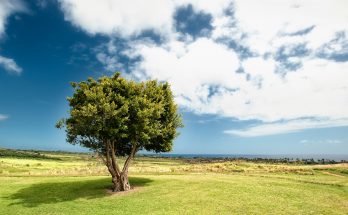In plant biology, understanding the “Difference between Radicle and Plumule” is key during seed germination. The Radicle, the first root, anchors and nourishes the plant by growing downward and absorbing soil nutrients. The Plumule, an embryonic shoot, grows upward towards light, leading to leaf and stem development. These distinctions are critical for a seedling’s successful transition into a mature plant.
Table of Contents
9 Differences between Radicle and Plumule in Tabular Format
| Aspect | Radicle | Plumule | |
|---|---|---|---|
| 1 | Definition | The embryonic root of the plant, developing into the root system. | The embryonic shoot of the plant, developing into the shoot system. |
| 2 | Direction of Growth | Grows downwards into the soil, guided by gravity. | Grows upwards into the air, away from the gravitational pull. |
| 3 | Colour | Whitish in colour. | Less whitish, often showing greenish hues as it develops. |
| 4 | Consequence in Germination | First part of the seedling to emerge during seed germination. | Grows after the Radicle, further developing the plant’s shoot system. |
| 5 | Development | Develops into the root system, providing support and absorbing nutrients. | Develops into the shoot system, producing leaves, branches, and flowers. |
| 6 | Phototropism | Negatively phototropic, grows away from light. | Positively phototropic, grows towards light. |
| 7 | Geotropism | Positively geotropic, grows in the direction of gravitational pull. | Negatively geotropic, grows against the gravitational pull. |
| 8 | Hydrotropism | Positively hydrotropic, grows towards moisture. | Negatively hydrotropic, shows less inclination towards moisture. |
| 9 | Function | Absorbs water and minerals, anchors the plant. | Conducts photosynthesis, produces the plant’s reproductive structures. |
Difference between Radicle and Plumule – Explained in details
Difference between Radicle and Plumule in terms of Definition–
- The Radicle is essentially the plant’s first root. It’s the initial part that emerges from a germinating seed, eventually developing into the main root system that supports the plant and absorbs nutrients and water from the soil.
- The Plumule, on the other hand, is the young shoot that emerges from the seed after the Radicle. It gives rise to the aerial parts of the plant, including the stem, leaves, and potentially flowers and fruits.
Also Check – Structure of the Seed
Difference between Radicle and Plumule in terms of Direction of Growth-
- Radicles grow downwards due to gravity, which is a characteristic known as positive geotropism. This downward growth helps the Radicle anchor the plant and search for water and nutrients in the soil.
- Plumules grow upwards, away from the earth’s gravitational pull, a phenomenon called negative geotropism. This upward growth allows the Plumule to access sunlight, which is crucial for photosynthesis.
Also Check – Types of Germination of Seed
Difference between Radicle and Plumule in terms of Colour-
- Radicles are typically whitish, which is common for parts of the plant that do not require photosynthesis, as they grow underground.
- Plumules can exhibit a greenish hue as they mature, due to the development of chlorophyll, which is necessary for photosynthesis.
Difference between Radicle and Plumule in terms of Consequence in Seed Germination-
- The Radicle is the pioneering part of the seedling during germination, ensuring that the plant is anchored and starts absorbing nutrients from the soil early on.
- The Plumule follows the Radicle’s emergence, focusing on growth above the soil to start the process of photosynthesis and further develop the plant’s structure.
Difference between Radicle and Plumule in terms of Development-
- The development of the Radicle into the root system is crucial for the plant’s overall stability, nutrient absorption, and water intake from the soil.
- The Plumule’s development into the shoot system enables the plant to grow vertically, produce leaves, and engage in photosynthesis, which is essential for the plant’s growth and energy production.
Difference between Radicle and Plumule in terms of Phototropism-
- Radicles exhibit negative phototropism, meaning they grow away from light sources. This characteristic ensures that they grow into the soil, which is their natural habitat for nutrient and water absorption.
- Plumules are positively phototropic, growing towards light sources. This behaviour is essential for maximising photosynthesis and the plant’s access to sunlight.
Difference between Radicle and Plumule in terms of Geotropism-
- The positive geotropism of Radicals, growing towards the gravitational pull, ensures that they penetrate the soil to anchor the plant and access soil nutrients.
- The negative geotropism of Plumules, growing against the gravitational pull, is vital for the shoot to reach the sunlight and expand the aerial parts of the plant.
Difference between Radicle and Plumule in terms of Hydrotropism-
- Radicles’ positive hydrotropism means they grow towards moisture, which is essential for their role in water absorption.
- Plumules show negative hydrotropism, indicating a lesser inclination towards moisture sources, as their primary focus is growth towards light for photosynthesis.
Difference between Radicle and Plumule in terms of Function-
- The Radical’s functions include water and mineral absorption from the soil and providing a strong anchor for the plant. This foundation is critical for the plant’s survival and stability.
- The Plumule’s role is to undergo photosynthesis, producing food for the plant and eventually developing into the parts of the plant that will bear leaves, flowers, and fruits, thus ensuring the plant’s growth and reproduction.
Also Check – 8 Important Differences between Epigeal and Hypogeal Germination
Frequently asked Questions on Difference between Radicle and Plumule
What is the radicle, and what role does it play in plant development?
Answer- The radicle is the embryonic root of a plant, emerging first during seed germination. It plays a crucial role in anchoring the plant to the soil, absorbing water and minerals, and establishing the foundation for the root system.
Define the plumule and its significance in a plant’s life cycle.
Answer- The plumule is the embryonic shoot that develops after the radicle, growing upwards towards the light. It is significant for initiating the plant’s shoot system, producing leaves, and engaging in photosynthesis, which is vital for the plant’s growth and development.
How does the direction of growth differ between the radicle and the plumule?
Answer- The radicle grows downwards, exhibiting positive geotropism, as it seeks moisture and nutrients from the soil. In contrast, the plumule grows upwards, showing negative geotropism, as it moves towards light sources for photosynthesis.
Discuss the phototropic responses of the radicle and plumule.
Answer- The radicle is negatively phototropic, meaning it grows away from light, which facilitates its growth into the soil. The plumule, however, is positively phototropic, growing towards light to maximise photosynthesis.
Explain the importance of the radicle and plumule’s coloration in their respective functions.
Answer- The radical’s whitish colour indicates its underground growth, where chlorophyll is unnecessary. The plumule may show greenish hues as it develops chlorophyll for photosynthesis, essential for its role in the shoot system above ground.
Describe how the radicle and plumule respond to water (hydrotropism).
Answer- The radicle exhibits positive hydrotropism, growing towards moisture sources crucial for water absorption. The plumule shows negative hydrotropism, as its primary function is not water absorption but to grow upwards for photosynthesis.
What distinct developmental paths do the radicle and plumule take, and how do these contribute to the plant’s overall structure?
Answer- The radicle develops into the plant’s root system, providing stability and nutrient absorption. The plumule develops into the shoot system, contributing to the plant’s structural growth above ground, including leaves, branches, and potentially flowers and fruits.



